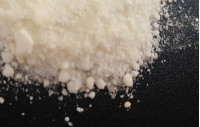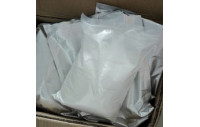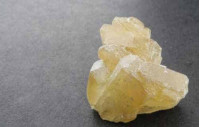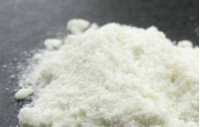
Buy TMA-2 for sale online from USA vendor
Table of Contents
- Chemistry and Pharmacology of 2,4,5-Trimethoxyamphetamine (TMA-2)
- Dosage Guidelines for TMA-2
- Subjective Effects of TMA-2
- Toxicity and Harm Potential of TMA-2
- Tolerance and Addiction Potential of TMA-2
- Legal Status of TMA-2
Overview of 2,4,5-Trimethoxyamphetamine (TMA-2)
2,4,5-Trimethoxyamphetamine (abbreviated TMA-2) is a synthetic psychedelic amphetamine known for producing a unique range of hallucinogenic and stimulant effects. These effects differ substantially from those of other psychoactive phenethylamines. TMA-2, along with TMA-6 and others, belongs to the trimethoxylated family of phenethylamines. Members of this family are noted for their complex mixture of hallucinogenic, stimulant, psychedelic, and entactogenic effects, distinguishing them from other psychedelic phenethylamine compounds like those in the 2C-x or DOx series.
Historical Background
Early Synthesis and Research
TMA-2 was first synthesized by Viktor Bruckner in 1933. However, it was not investigated as a psychoactive chemical until Alexander Shulgin synthesized and tested it in 1962. Shulgin published his synthesis and initial research findings in a 1964 paper, describing the effects as similar to mescaline but with fewer color effects, less nausea, and a tendency to cause anxiety and restlessness.
Counter-Culture References
In the early 1970s, there were occasional references to the use of TMA-2 in counter-culture publications. These sources described the drug as rarely produced for sale and expensive compared to LSD. This suggests that human usage of TMA-2 was very limited between its invention and the publication of its synthesis and pharmacology in Shulgin's 1991 book "PiHKAL" (Phenethylamines I Have Known And Loved).
Subjective Effects and Anecdotal Reports
Effects Profile
TMA-2 is known for its lack of classic psychedelic visuals compared to its parent compound, mescaline. Instead, it is recognized for its unique stimulating body-high and altered headspace, which can range from euphoric to dysphoric. Anecdotal reports suggest that TMA-2 is highly unpredictable and dose-sensitive, often producing uncomfortable body load, nausea, overstimulation, and inconsistent experiences between uses.
Modern Usage
Today, TMA-2 is used as an obscure recreational drug and an occasional entheogen. It is rarely sold on the streets and is almost exclusively available as a grey area research chemical through online vendors.
TMA-2 stands out among psychedelic amphetamines due to its unique effects and limited availability. Its unpredictable nature and dose sensitivity make it a substance of interest primarily to those in the psychedelics community who seek novelty and are aware of its potential for both positive and negative experiences.
Chemistry and Pharmacology of 2,4,5-Trimethoxyamphetamine (TMA-2)
Chemistry
2,4,5-Trimethoxyamphetamine (TMA-2) is a molecule within the substituted amphetamine class. Amphetamines are a subset of phenethylamines, which consist of a phenyl ring bonded to an amino (NH2) group via an ethyl chain, and a methyl group attached to the alpha carbon (Rα). The chemical structure of TMA-2 includes methoxy functional groups (CH3O-) attached to the second (R2), fourth (R4), and fifth (R5) carbons of the amphetamine backbone.
Pharmacology
TMA-2's psychedelic effects are primarily attributed to its action as a partial agonist at the 5-HT2A receptor. This receptor interaction is crucial in the modulation of neurotransmission that leads to psychedelic experiences. However, the precise mechanisms through which TMA-2 induces its effects remain not fully understood. The role of these receptor interactions and their contribution to the overall psychedelic experience continues to be a subject of ongoing research.
Dosage Guidelines for 2,4,5-Trimethoxyamphetamine (TMA-2)
Threshold Dosage
- Threshold: 5 mg
At this dosage level, users may begin to feel the initial effects of TMA-2. This is considered the minimal effective dose where subtle changes in perception and mood might be noticeable.
Light Dosage
- Light: 10 - 20 mg
A light dose of TMA-2 typically results in mild psychoactive effects. Users might experience slight alterations in sensory perception, mood enhancement, and minor stimulation without significant visual or cognitive changes.
Common Dosage
- Common: 20 - 40 mg
The common dosage range for TMA-2 induces more pronounced psychoactive effects. Users often report noticeable changes in sensory perception, moderate stimulation, and an altered headspace. This dose is generally sufficient to produce the characteristic hallucinogenic and stimulant effects of TMA-2.
Strong Dosage
- Strong: 40 - 60 mg
A strong dose of TMA-2 results in intense psychoactive effects. Users can expect significant alterations in sensory perception, heightened stimulation, and a deeply altered mental state. At this level, the effects can be overwhelming for some, and the risk of adverse reactions increases.
Heavy Dosage
- Heavy: 60 mg +
Dosages above 60 mg are considered heavy and can lead to profound and potentially disorienting experiences. Users may experience powerful hallucinogenic effects, extreme stimulation, and a high likelihood of negative side effects such as anxiety, nausea, and body load. This dosage range is generally not recommended for most users due to the increased risk of unpredictable and intense reactions.
Subjective Effects of 2,4,5-Trimethoxyamphetamine (TMA-2)
Overview
The following section outlines the subjective effects of 2,4,5-Trimethoxyamphetamine (TMA-2), based on anecdotal user reports and analyses from PsychonautWiki contributors. These effects are compiled in the Subjective Effect Index (SEI), an open research literature. It is important to approach this information with a healthy degree of skepticism, as individual experiences can vary widely. Higher doses are more likely to induce the full spectrum of effects, but also increase the risk of adverse reactions, including addiction, severe injury, or death.
Physical Effects
- Stimulation: TMA-2 is typically extremely stimulating, promoting physical activities such as moving, running, dancing, and climbing. Users may experience shakiness and unsteadiness of the hands. This contrasts with the generally sedating effects of other psychedelics like psilocin.
- Spontaneous Bodily Sensations: Users often report a somewhat intense "body high" described as a mild, energetic pins-and-needles sensation that covers the entire body. This sensation may shift and travel in waves.
- Tactile Enhancement: Enhanced tactile sensations are consistently present at moderate doses.
- Nausea: Users may experience mild to extreme nausea at moderate to high doses, which usually subsides after vomiting or as the peak effects set in.
- Vasoconstriction: Typically occurring at higher doses, this effect can be particularly uncomfortable.
- Other Effects: Bodily control enhancement, pupil dilation, and increased blood pressure.
Visual Effects
- Enhancements:
- Visual Acuity Enhancement
- Color Enhancement
- Pattern Recognition Enhancement
- Distortions:
- Drifting (Melting, Flowing, Breathing, Morphing): These effects are detailed, slow, smooth, static in appearance, and often cartoon-like.
- Tracers
- After Images
- Symmetrical Texture Repetition
- Color Shifting
- Diffraction
Cognitive Effects
- Empathy, Affection, and Sociability Enhancement: These effects are more pronounced in social settings, though they are weaker compared to substances like MDMA and 2C-B.
- Analysis Enhancement
- Thought Acceleration
- Time Distortion
- Novelty Enhancement
- Immersion Enhancement
- Conceptual Thinking
- Thought Connectivity
- Emotion Enhancement
- Increased Music Appreciation
- Personal Bias Suppression
- Memory Suppression
- Ego Death
- Wakefulness
- Increased Libido
Auditory Effects
- Enhancements: Users may experience enhanced auditory perception.
- Distortions and Hallucinations: Auditory distortions and hallucinations can also occur, although they are less common.
Experience Reports
Anecdotal reports describing the effects of TMA-2 can be found in various online resources, such as the Erowid Experience Vaults.
Toxicity and Harm Potential
Toxicity studies in rats have shown that TMA-2 doses of 80 mg/kg can induce frequent clonic convulsions, and a dose of 120 mg/kg has been associated with fatal toxic effects. The estimated LD50 in mice is 180 mg/kg. The long-term health effects and exact toxic dose of TMA-2 in humans are not well-studied due to its limited history of use. Anecdotal evidence suggests no significant negative health effects at low to moderate doses when used sparingly, but independent research is recommended before combining TMA-2 with other substances.
Tolerance and Addiction Potential
TMA-2 is not habit-forming, and the desire to use it typically decreases with use. Tolerance to its effects builds almost immediately after ingestion, with tolerance levels halving after three days and returning to baseline after seven days without further consumption. TMA-2 presents cross-tolerance with all psychedelics, reducing the effects of other psychedelics after its use.
Legal Status
- European Union: In November 2003, the European Council decided that TMA-2 should be subject to control measures and criminal penalties.
- Austria: TMA-2 is illegal to possess, produce, and sell under the SMG (Suchtmittelgesetz Österreich).
- Germany: Controlled under Anlage I BtMG (Narcotics Act, Schedule I) since October 10, 1999. It is illegal to manufacture, possess, import, export, buy, sell, procure, or dispense without a license.
- Switzerland: TMA-2 is specifically named as a controlled substance under Verzeichnis D.
- Turkey: Classified as a drug, making it illegal to possess, produce, supply, or import.
- United Kingdom: TMA-2 is a controlled Class A drug under the Misuse of Drugs Act 1977, covered by the generic definition (as a positional isomer of the UN controlled drug TMA).
Frequently Asked Questions (FAQ) about 2,4,5-Trimethoxyamphetamine (TMA-2)
Q: What is TMA-2?
A: TMA-2, or 2,4,5-trimethoxyamphetamine, is a synthetic psychedelic amphetamine known for producing a unique range of hallucinogenic and stimulant effects.
Q: How does TMA-2 differ from other psychedelic phenethylamines?
A: TMA-2 belongs to the trimethoxylated family of phenethylamines, which includes compounds like TMA-6. These substances produce a complex mixture of hallucinogenic, stimulant, psychedelic, and entactogenic effects that distinguish them from other psychedelic phenethylamines like those in the 2C-x or DOx series.
Q: What are the common dosage ranges for TMA-2?
A: The dosage ranges for TMA-2 are as follows:
- Threshold: 5 mg
- Light: 10 - 20 mg
- Common: 20 - 40 mg
- Strong: 40 - 60 mg
- Heavy: 60 mg +
Q: What are some of the subjective effects of TMA-2?
A: Subjective effects of TMA-2 include stimulation, spontaneous bodily sensations, tactile enhancement, nausea, vasoconstriction, visual enhancements and distortions, cognitive enhancements, auditory effects, and more.
Q: Is TMA-2 toxic or habit-forming?
A: TMA-2 can be toxic at higher doses, with reported instances of convulsions and fatal effects in animal studies. However, it is not considered habit-forming, and tolerance to its effects builds almost immediately after ingestion.
Q: What is the legal status of TMA-2?
A: The legal status of TMA-2 varies by country, with some countries classifying it as a controlled substance and others having specific regulations regarding its possession, production, sale, and use.
To prepare the content, the following materials were used:
- FDA Substance Registration System
- Hazardous Substances Data Bank. National Library of Medicine. 28 August 2008. Retrieved 22 August 2014. 3,4-Methylenedioxymethamphetamine
- Liver transplant modulates gut microbial dysbiosis and cognitive function in cirrhosis. PDF . By HoChong Gilles, Scott C Matherly, Mohammed S Siddiqui, Puneet Puri...
- Differential impact of hyponatremia and hepatic encephalopathy on health-related quality of life and brain metabolite abnormalities in cirrhosis . By Jasmohan Bajaj
- An overview of alcohol and other drug issues
- Medicating the mind: a Kantian analysis of overprescribing psychoactive drugs B A Manninen
- The pharmacological basis of opioids Carla Ghelardini, Lorenzo Di Cesare Mannelli and Enrica Bianchi
- Ask Dr. Shulgin Online ARCHIVE: June 3, 2004
- Inhibition of plasma membrane monoamine transporters by β-ketoamphetamines. Nicholas V Cozzi, Michael KSievert, Alexander T Shulgin, Peyton JacobIII, Arnold Eruoho
- Schedules of Controlled Substances: Placement of Methylone Into Schedule I
- Bioanalysis of new designer drugs. Wohlfarth A, Weinmann W.
- New Psychoactive Substances (including synthetic cannabinoids, mephedrone, and more)
- Future Synthetic Drugs of Abuse. Donald A. Cooper. Drug Enforcement Administration McLean, Virginia
- Designer drugs: a medicinal chemistry perspective. F. Ivy Carroll Anita H. Lewin S. Wayne Mascarella Herbert H. Seltzman P. Anantha Reddy
- Synthetic cannabinoids in Europe
- Pharmacological Effects of MDMA in Man. By Enno Freye
- Drug Use in Relation to Outcome of Mammography Screening. von Euler-Chelpin M, Wu W, Vejborg and Lynge E
- DEA Drug Scheduling
- Electrophysiological Effects of Trace Amines on Mesencephalic Dopaminergic Neurons.Ada Ledonne, Nicola Berretta, Alessandro Davoli, Giada Ricciardo Rizzo, Giorgio Bernardi and Nicola Biagio Mercuri
- Electrophysiological evidence for a reciprocal interaction between amphetamine and cocaine-related drugs on rat midbrain dopaminergic neurons.Scarponi M, Bernardi G, Mercuri NB.
- Overdose of Drugs for Attention-Deficit Hyperactivity Disorder: Clinical Presentation, Mechanisms of Toxicity, and Management. Henry A. Spiller, author Hannah L. Hays Alfred Aleguas.
- Dose-dependent effectiveness of wheel running to attenuate cocaine-seeking: impact of sex and estrous cycle in rats. Peterson AB, Hivick DP, Lynch WJ.r.
- FDA Drug Safety Communication: Safety Review Update of Medications used to treat Attention-Deficit/Hyperactivity Disorder (ADHD) in children and young adults
- ADHD Medications and Risk of Serious Cardiovascular Events in Young and Middle-aged Adults
- Controlled Substances Act
- The Art of Drug Synthesis (Wiley Series on Drug Synthesis)
- Cannabis: domestic cultivation widespread
- A review of the influence of functional group modifications to the core scaffold of synthetic cathinones on drug pharmacokinetics
200g $590
1kg $1890
100mg $840
1kg $1590
1kg $1590
100g $500
100mg $840
1kg $1590
100g $390
1kg $1590
1kg $1590
100g $390


-min-200x127.JPG)






